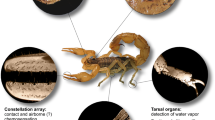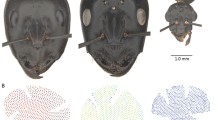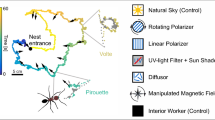Abstract.
The searching behavior of blinded cockroaches was examined under unrestrained conditions, in an arena, and on a treadmill. When cockroaches searching in a circular arena touched a stationary object (metal pole) with their antennae, they frequently approached the object more closely, and then climbed up it. Similar orientation behavior was observed in tethered animals in open loop conditions, walking on a Styrofoam ball. In these restrained cockroaches, a single antenna sufficed to distinguish the angular positions of an object, in the horizontal plane (0°, 45°, and 90°). A group of mechanosensitive hairs on the basal segment of the antenna (scapal hair plate) appears to play a major role in antennal object detection in the horizontal plane, as gauged by shaving off these scapal hair plates. In unrestrained cockroaches, shaving the scapal hair plate increased the time needed to approach an object. Under tethered conditions, the ability to turn towards and to establish antennal contact with a test object was significantly impaired.
Similar content being viewed by others
Author information
Authors and Affiliations
Additional information
Electronic Publication
Rights and permissions
About this article
Cite this article
Okada, J., Toh, Y. The role of antennal hair plates in object-guided tactile orientation of the cockroach (Periplaneta americana). J Comp Physiol A 186, 849–857 (2000). https://doi.org/10.1007/s003590000137
Accepted:
Issue Date:
DOI: https://doi.org/10.1007/s003590000137




